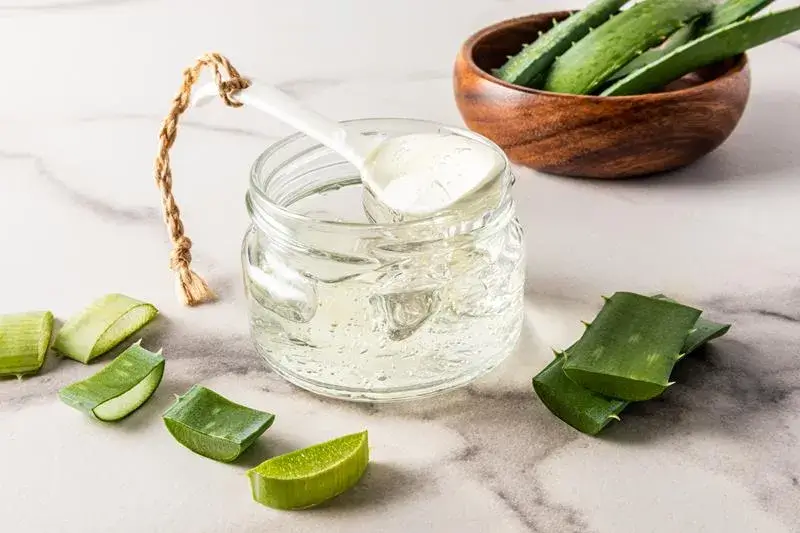Wouldn’t it be lovely to have bright, beautiful skin without spending too much money and rubbing more chemicals into your skin? You can create a homemade natural facial moisturizer with common ingredients that provide long-lasting moisture and care for your skin. Select the recipe that you like the best and let the fun begin.
Basic ingredients for a DIY face moisturizer
Creating, or more appropriately, ‘crafting’ a homemade moisturizer from scratch is a persuasive act of self-care. Within a quarter of an hour, you fashion a bioactive skin plaque from pristine oils and herbs, devoid of silicone, parabens, and surfactants. The act of making is, in and of itself, a kind of meditation, as you conceive an aten of wax, catch a trace of essential oils and herbal medicines.
The basis of homemade moisturizers is usually very similar: plant oils, plant-based waxes, water or hydrosols, aloe vera, and essential oils. Now, let’s layer some science over our magic and investigate the function of each ingredient.
Base — plant oils
Most moisturizer bases are made with oils — be it coconut, jojoba, almond, shea, or argan oil — which deeply nourish and help provide silky softness and protection.
Choosing the right oil for your skin type makes the moisturizer even more effective:
- Oily and Combination Skin— Jojoba is the best option as its structure most closely resembles natural sebum, is great at regulating oiliness and is known to help with acne. Coconut oil might be too heavy for this skin type.
- Dry or Dull Skin — Almond oil is a fantastic base; it is rich in vitamin E providing lots of hydration and improving skin elasticity. Shea butter will also help nourish and repair your skin.
- Very Dry and Sensitive Skin— The best oil option would be shea butter; ultra-nourishing for dryness and eczema.
- Mature Skin— Argan oil is nourishing and helps improve radiance and softness.
- All Skin Types (optional) — Coconut oil can help soften and protect the skin. It does have mild antibacterial properties as well.
As you can see, the options available to you for your moisturizer formulations will be the best oil choice based on your skin’s needs.
Texture — plant-based waxes
Vegan waxes such as carnauba or candelilla will thicken a cream and assist in holding in moisture. Vegan waxes are particularly useful for dry and sensitive skin, creating a barrier and enhancing the overall texture of the moisturizer.
Hydration — water and hydrosols
With water and plant-based hydrosols, a cream’s texture is airy and moisture is ample:
- Rose Water — softens and replenishes moisture; great for dry and sensitive skin.
- Witch Hazel — will constrict pores gently, reduce inflammation, great for oily and problematic skin.
Together, they also help maintain hydration in the skin, while at the same time improving the texture of the cream. This basis allows for deeper and more effective penetration of active ingredients.
Soothing — Aloe Vera
Aloe vera gel is a versatile ingredient for deep and soothing moisture to redness, irritation, and inflammation. It is full of vitamins and antioxidants, and calms sensitive skin, aids in healing, and can help reduce discomfort in acne-prone or stressed areas, and leaves the skin feeling cool and balanced.
Additional benefits — essential oils
Why add them to your DIY moisturizer? In addition to providing a natural fragrance, plant-based essential oils also infuse additional skin-loving properties into your moisturizer:
- Lavender — calms irritation.
- Tea Tree — antiseptic, aids inflammation and acne.
- Geranium — regulates sebum production; great for oily skin.
- Rosemary — tones the skin and improves microcirculation.
Essential oils are potent so should be handled gingerly – generally 1-2 drops per jar – to avoid irritation.
The art of substitution
We’ve already tested what happens in each case, so there won’t be any unpleasant surprises:
- Waxis mainly for a thicker texture and to hold the cream on the skin, but if it’s unavailable, you can skip it — the cream will be lighter, like a lotion or gel, but still moisturizing.
- Aloe veraor hydrosols can be replaced with plain water or herbal infusions, such as chamomile, calendula, or yarrow, which add soothing and healing effects.
- Essential oils add scent and superior benefits, but can also be left out or substituted with herbal infusions that elicit similar benefits.
- Oils remain the main base, providing nourishment and protection, and can be selected according to skin type: heavier oils for dry skin, lighter oils for oily or combination skin. Even a single oil will fulfill the basic function of the cream.
Store the cream in small portions in the fridge, especially if wax is omitted or herbal infusions are used, usually for 5–7 days. This way, your homemade cream will be adaptable, and effective, even if some ingredients are unavailable.
Create your own face care: step-by-step
Good skincare doesn’t have to be complicated. Here’s a simple method for working with oils and mixing ingredients that you can use for every recipe:
- Prepare ingredients and bowls
Weigh all your ingredients on a kitchen scale. Get two bowls ready: one for the liquid part (water, herbal infusions, hydrosols, aloe) and one for the oil part (plant oils and waxes). Make sure all your bowls and storage containers are clean — this keeps your cream safe and long-lasting. - Heat the ingredients
Melt the oils and waxes in the oil bowl, and warm up the liquid in the other bowl. A double boiler works best, but you can also melt gently in the microwave in short 10–15 second bursts, stirring constantly. The goal is to melt the hard oils and wax and warm the water or infusion slightly. - Mix it all
Slowly pour the liquid into the melted oils while whisking or using a mixer. Whip for 3–5 minutes until you get a smooth, creamy texture — the mixture will get lighter in color and a bit fluffier. - Cool down and stir in the actives
Let the cream cool until it’s just warm. You can put the bowl in cold water to speed things up, but don’t use ice. When it’s warm, add sensitive ingredients like essential oils, plant extracts, vitamin E, or natural preservatives. Mix well. - Store and use
Put your cream into a clean glass jar or tube with a lid. Keep it in a cool place or fridge. Use within 3–6 months and test on a small patch of skin before first use.
With the skill of making any cream, it is time for the most exciting step.

Mix & glow: natural recipes for every skin type
Let’s move on to choosing the ingredients that will gently protect and nourish your skin. Keep the proportions, experiment with ingredients, and be sure to enjoy the process!
DIY face moisturizer for oily skin
For light hydration and shine control, choose oils like:
- Jojoba, shea butter, carnauba wax;
- grape seed oil, tamanu oil, hemp seed oil;
- avocado oil, jojoba oil, wheat germ oil.
Recipe:
- 2 tbsp melted plant wax (≈30 ml / 1 oz) — carnauba, candelilla;
- 2 tbsp chosen solid oil (≈30 ml / 1 oz) — shea, coconut;
- 2 tbsp chosen light oil (≈30 ml / 1 oz) — jojoba, grape seed, avocado;
- 10 drops essential oil — lavender, frankincense, tea tree.
Helps balance skin and prevents excess oiliness.
DIY moisturizer for dry skin
For deep nourishment and hydration, use these oil combinations:
- Mango butter, grape seed oil, avocado oil;
- shea butter, argan oil, jojoba oil;
- coconut oil, macadamia oil, rosehip oil.
Recipe:
- 1 cup melted solid oil (≈225 g / 8 oz) — mango, shea, coconut, etc.;
- ½ cup liquid oil (≈110–120 g / 4–4.2 oz) — grape seed, avocado, argan, etc.;
- 2 tbsp herbal infusion (≈30 ml / 1 oz) — calendula, yarrow, plantain;
- 10–15 drops calming essential oil — chamomile, lavender.
This deeply nourishes and restores dry, sensitive skin.
Homemade face moisturizer for sensitive skin
Gentle oils for delicate skin:
- Olive oil, cocoa butter, candelilla wax;
- shea butter, sweet almond oil, jojoba oil;
- argan oil, grape seed oil, macadamia oil.
Recipe:
- 1 cup chosen plant oil (≈250 ml / 8.5 oz) — olive, almond, argan;
- 2 tbsp solid oil (≈30 g / 1 oz) — cocoa, shea;
- 2 tbsp plant wax (≈30 ml / 1 oz) — candelilla, carnauba;
- ½ cup hydrosol (≈125 ml / 4.2 oz) — chamomile, rose, lavender;
- 10–15 drops calming essential oil — chamomile, lavender.
This moisturizes and soothes irritation, perfect for sensitive skin.

Author

Alexandra Mukhina
Content writer on https://rythmoftheworld.com Experienced linguist and translator with a knack for crafting and refining diverse content. My goal is to produce engaging, informative texts that captivate readers. Passionate about reading, music, traveling, and exploring new avenues of personal growth.



